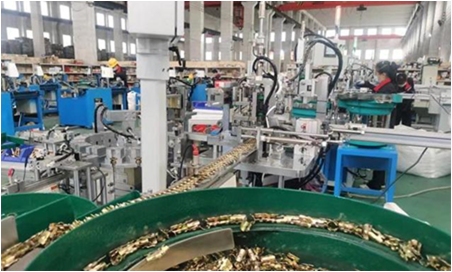Sep . 19, 2024 16:49 Back to list
m8 anchor bolts
Understanding M8 Anchor Bolts A Comprehensive Guide
Anchor bolts are essential components in construction and engineering, providing stability and support for various structures. Among the different sizes and types of anchor bolts available, M8 anchor bolts are particularly noteworthy due to their versatility and reliability. This article delves into the characteristics, applications, and installation processes associated with M8 anchor bolts.
What is an M8 Anchor Bolt?
The “M” in M8 denotes the metric designation, specifying that the bolt has a nominal diameter of 8 millimeters. These bolts can vary in length, head type, and material composition, making them adaptable to different project requirements. Common materials for M8 anchor bolts include stainless steel, carbon steel, and galvanized steel, each offering varying levels of corrosion resistance and strength.
Characteristics of M8 Anchor Bolts
1. Size and Strength M8 anchor bolts have a diameter of 8mm and can typically handle a tensile load of up to 2.4 kN, depending on the material and grade. The design allows for easy integration into concrete structures, providing robust anchoring capability.
2. Versatility One of the primary advantages of M8 anchor bolts is their versatility. They are commonly used in a variety of applications, including securing machinery, fixtures, and building components to concrete foundations. This makes them ideal for both industrial and residential projects.
3. Installation Flexibility M8 anchor bolts can be installed in different ways – including cast-in-place, drilled-in, or expansion types, offering flexibility depending on the specific needs of the project.
Applications of M8 Anchor Bolts
M8 anchor bolts find extensive use in numerous applications
- Construction In the construction of buildings, M8 anchor bolts are used to secure walls, columns, and beams to concrete foundations. Their strength ensures that structural elements remain anchored even under significant load.
m8 anchor bolts

- Infrastructure These bolts play a critical role in securing various infrastructure elements, including bridges and highways. They provide the necessary stability to withstand environmental factors like wind and seismic activity.
- Machinery and Equipment In industrial settings, M8 anchor bolts are often used to secure heavy machinery and equipment to concrete floors. This prevents movement and vibrations that could lead to accidents or equipment damage.
Installation Process
Installing M8 anchor bolts requires careful planning and execution
1. Preparation Select the appropriate bolt length based on the material thickness and load requirements. Prepare the concrete surface to ensure proper bonding.
2. Drilling If using drilled-in bolts, drill a hole to the required depth and clean the hole of dust and debris.
3. Insertion Place the anchor bolt into the hole, ensuring it is aligned correctly. If using expansion bolts, ensure the expansion sleeve is properly seated.
4. Securing Tighten the bolt according to the specifications to ensure it can handle the expected loads without loosening over time.
5. Inspection After installation, inspect each bolt to ensure it is secure. Post-installation testing may be necessary to confirm load-bearing capacity.
Conclusion
M8 anchor bolts are an invaluable component in construction and engineering, offering strength, versatility, and reliability. Understanding their characteristics, applications, and installation methods is essential for anyone involved in construction or structural engineering. By choosing the right anchor bolts for a project, it becomes possible to ensure safety, stability, and durability in any built environment. Whether in residential buildings or large infrastructure projects, M8 anchor bolts play a crucial role in maintaining the integrity of structures.


